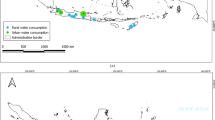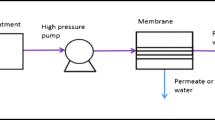Abstract
-
Preamble. This series of two papers analyses and compares the environmental loads of different water production technologies in order to establish, in a global, rigorous and objective way, the less aggressive technology for the environment with the present state of the art of the technology. Further, it is also presented an estimation of the potential environmental loads that the considered technologies could provoke in future, taking into account the most suitable evolution of the technology.
-
Part 1 presents the assessment of most commercial desalination technologies which are spread worldwide: Reverse Osmosis, Multi Effect Desalination and Multi Stage Flash. Part 2 presents the comparative LCA analysis of a big hydraulic infrastructure, as is to be found in the Ebro River Water Transfer project, with respect to desalination.
-
DOI: http://dx.doi.org/10.1065/lca2004.09.179.1
-
Intention, Goal and Background. In this paper, some relevant results of a research work are presented, the main aim of which consists of performing the environmental assessment of different water production technologies in order to establish, in a global, rigorous and objective way, the less aggressive technology for the environment of potable water supply to the end users. That is, the scope of this paper is mostly oriented to the comparative Life Cycle Assessment of different water production technologies instead of presenting new advancements in the LCA methodology. In Part 1, the environmental loads associated with the most widespread and important commercial desalination technologies all over the world - Reverse Osmosis (RO), Multi Effect Desalination (MED) and Multi Stage Flash (MSF) – are compared. The assessment technique is the Life Cycle Analysis (LCA), which includes the entire life cycle of each technology, encompassing: extraction and processing raw materials, manufacturing, transportation and distribution, operation and final waste disposal.-
Methods
and Main Features. The software SimaPro 5.0, developed by Dutch PRé Consultants, has been used as the analysis tool, because it is a well known, internationally accepted and validated tool. Different evaluation methods have been applied in the LCA evaluation: CML 2 baseline 2000, Eco-Points 97 and Eco-Indicator 99. Data used in the inventory analysis of this Part 1 come from: a) existing plants in operation; b) data bases implemented in the SimaPro 5.0 software -BUWAL 250, ETH-ESU 96, IDEMAT 2001. Different scenarios have been analyzed in both parts in order to estimate, not only the potential of reduction of the provoked environmental loads with the present state of the art of technology, but also the most likely future trend of technological evolution. In Part 1, different energy production models and the integration of desalination with other productive processes are studied, while the effect of the most likely technological evolution in the midterm, and the estimation of the environmental loads to the water transfer during drought periods are considered in Part 2.
Results and Discussion
The main contribution to the global environmental impact of desalination technologies comes from the operation, while the other phases, construction and disposal, are almost negligible when compared to it. Energy is very important in desalination, for this reason the environmental loads change a lot depending on the technology used for providing the energy used in the desalination process. Among the different analyzed technologies, RO is the least aggressive desalination technology (one order of magnitude lower than the thermal processes, MSF and MED) for the environment. When integrating thermal desalination with other productive processes taking advantage of the residual heat, the environmental loads of thermal desalination technologies is highly reduced, obtaining similar loads to that of RO. The environmental loads of desalination technologies are significantly reduced when an energy model based on renewable energies is used. Taking into account the technological evolution, which is experiencing the RO, a reduction of its environmental load by about 40% is to be expected in the mid-term.
Conclusion
The main conclusion of Part 1 is that, with the present state of the art of the technology, RO is clearly the desalination technology with a reduced environmental load (one order of magnitude lower than the thermal processes, MSF and MED). In the case of thermal desalination technologies, their environmental load can be highly reduced (about 1,000 times less) when integrated with other industrial processes. In the case of RO, the scores and the airborne emissions obtained from an electricity production model based on renewable energies are about 65-70 times lower than those obtained when the electricity production model is mainly based on fossil fuels.
Recommendations and Outlook
Although desalination technologies are energy intensive and provoke an important environmental load, they present a high potential in being reduced since: a) in the mid-term, it is to be expected that the different technologies could improve their efficiency significantly, b) the environmental loads would be highly reduced if the energy production models were not mainly based on fossil fuels and c) the energy consumption, particularly in the case of thermal desalination, can be drastically reduced when integrating desalination with other productive processes. The results presented in this paper indicate that a very interesting and promising field of research is available in order to reduce the environmental load of these vigorous and increasing desalination technologies.
Similar content being viewed by others
Author information
Authors and Affiliations
Corresponding author
Rights and permissions
About this article
Cite this article
Raluy, R., Serra, L. & Uche, J. Life Cycle Assessment of Water Production Technologies - Part 1: Life Cycle Assessment of Different Commercial Desalination Technologies (MSF, MED, RO) (9 pp). Int J Life Cycle Assessment 10, 285–293 (2005). https://doi.org/10.1065/lca2004.09.179.1
Received:
Accepted:
Published:
Issue Date:
DOI: https://doi.org/10.1065/lca2004.09.179.1




